Following up on Monday’s post on reboots, here’s one of the biggest of the early Bronze Age — because it was Superman.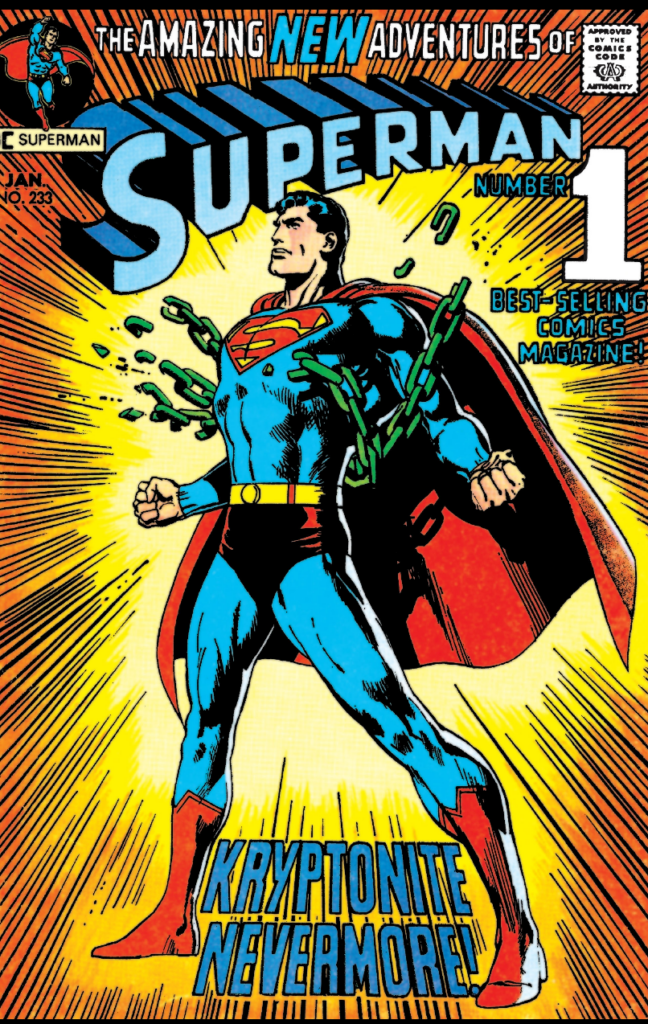
Rebooting the Black Widow is one thing; making changes to a major franchise is another. Schwartz had already overseen Batman’s transition to the New Look, then to the Dark Knight era. With veteran Superman editor Mort Weisinger finally retiring, Schwartz now took over Superman with #233, “Superman Breaks Loose” by Denny O’Neil and Curt Swan (Neal Adams did the cover).
DC’s house ads didn’t hesitate to alert fans change was coming —
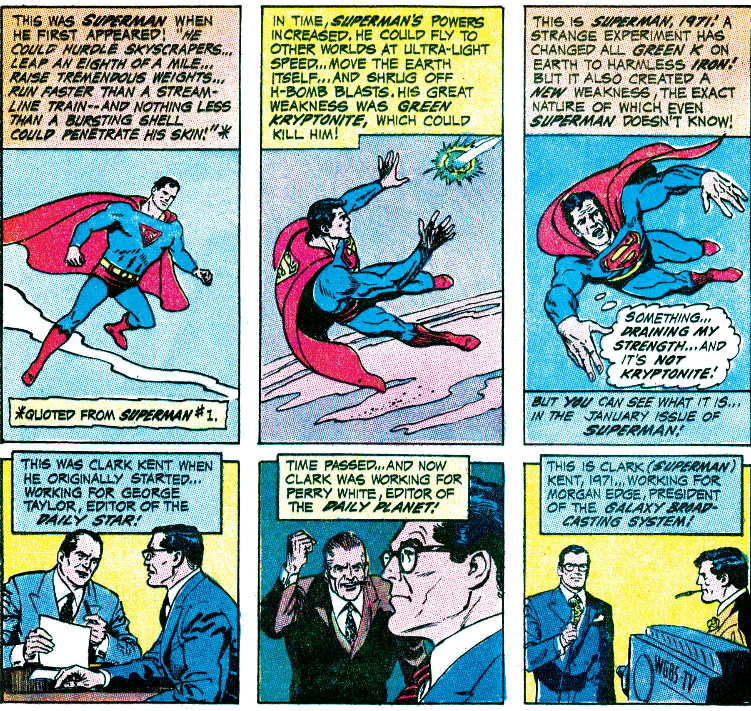
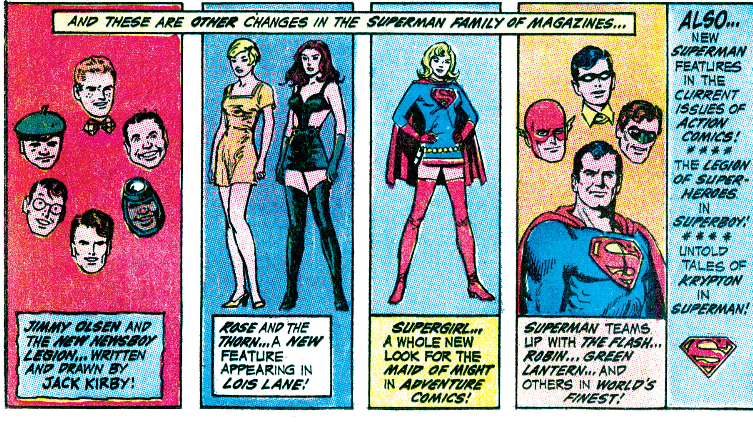
Kryptonite was one of the things that defined Superman in the 1950s and 1960s. Any fan could tell you the different colors (red, gold, blue, white, jewel) and their effects; it was what kept the Man of Might from being unstoppable to the point of boring. In this issue, though, a chain reaction in a kryptonite-fueled nuclear power plant converts all kryptonite on Earth to iron.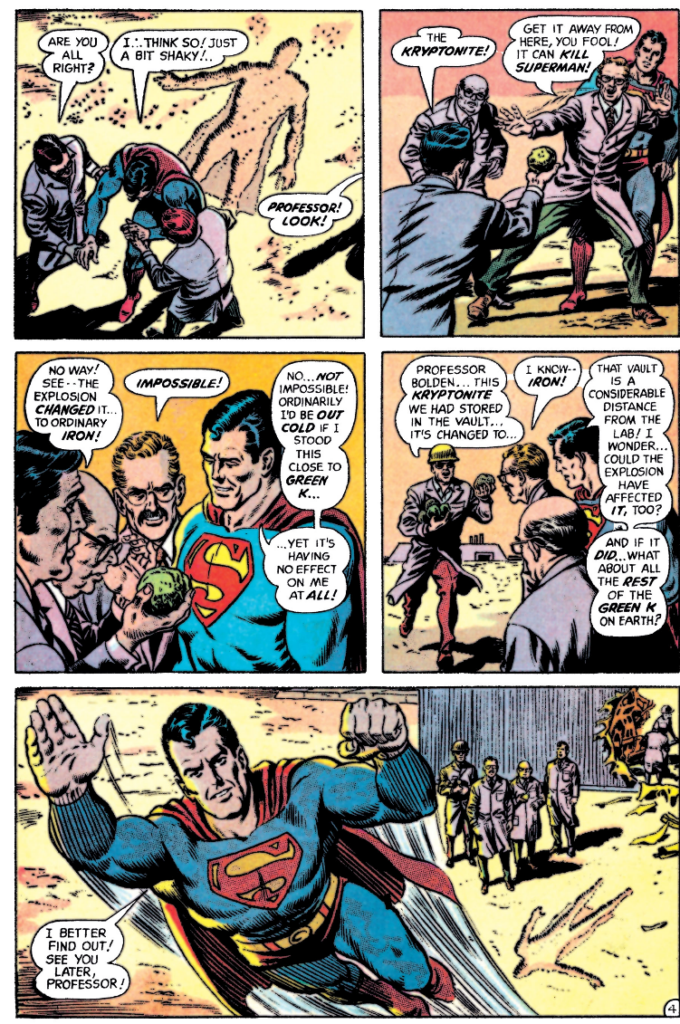
When I started reading Superman again a year or two later, it felt like a seismic shift — no kryptonite? Whoa! A later story would wipe out all kryptonite in the rest of the universe, thereby eliminating the possibility of more meteorites landing on Earth.
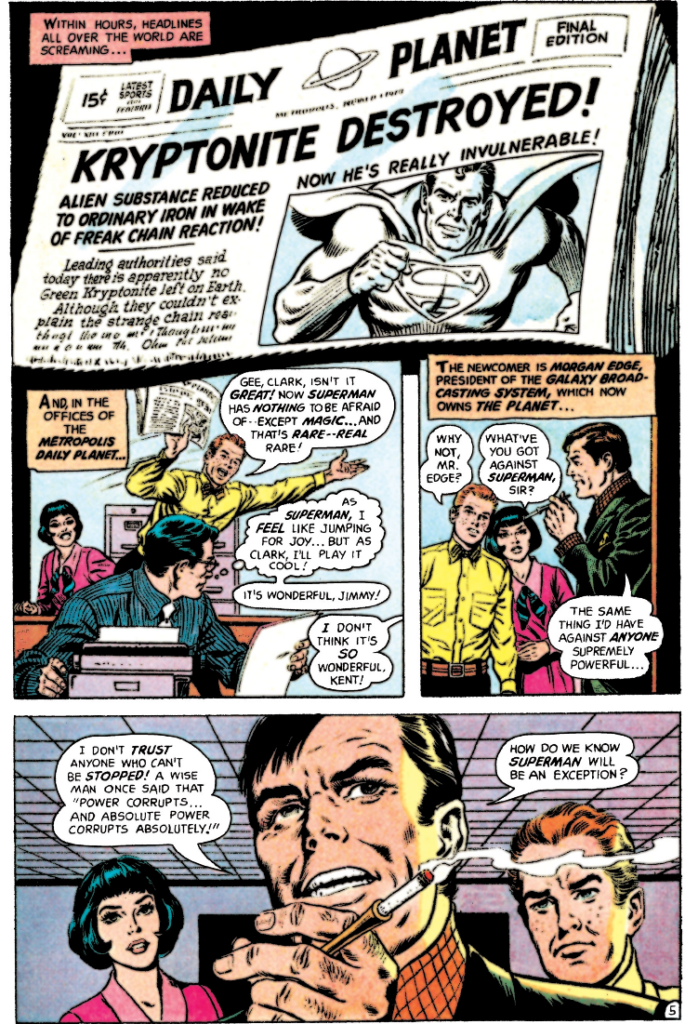
Another shift: Morgan Edge, having been introduced in Superman’s Pal, Jimmy Olsen, now starts appearing in other Superman family books. Here he transfers Kent out of the Daily Planet and into WGBS, Galaxy Communications flagship station. That was a startling change too.
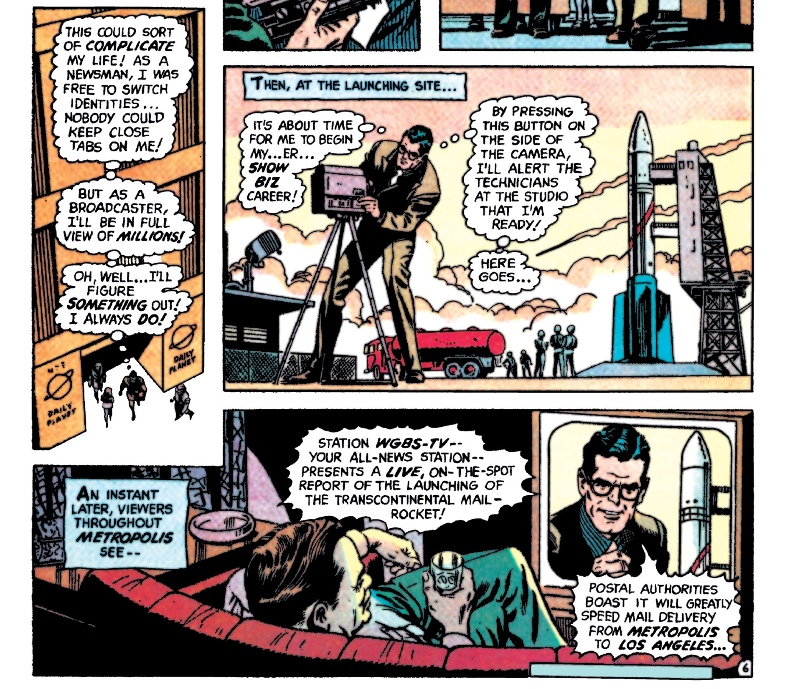
Not a practical or logical one. As many people have said, TV reporting requires being on air at the time of the broadcast. That conflicts with Clark’s duties as Superman in a way print journalism, despite its deadlines, doesn’t. As this was the new status quo, however, Clark managed to balance both roles; the worst that happened was that he’d rush onto the air at the last minute while his producer freaked out.
I assume that like Lois changing her wardrobe, this was another way to update the series for the 1970s. TV reporting had become far bigger and more influential than print so Schwartz and O’Neil had Clark change with the times (if you’re curious, David Halberstam’s The Powers That Be does a great job showing the evolution of national journalism through the 20th century). It wasn’t a great change, but it was better than the 21st century story arc where Clark quit the Planet to become a blogger.
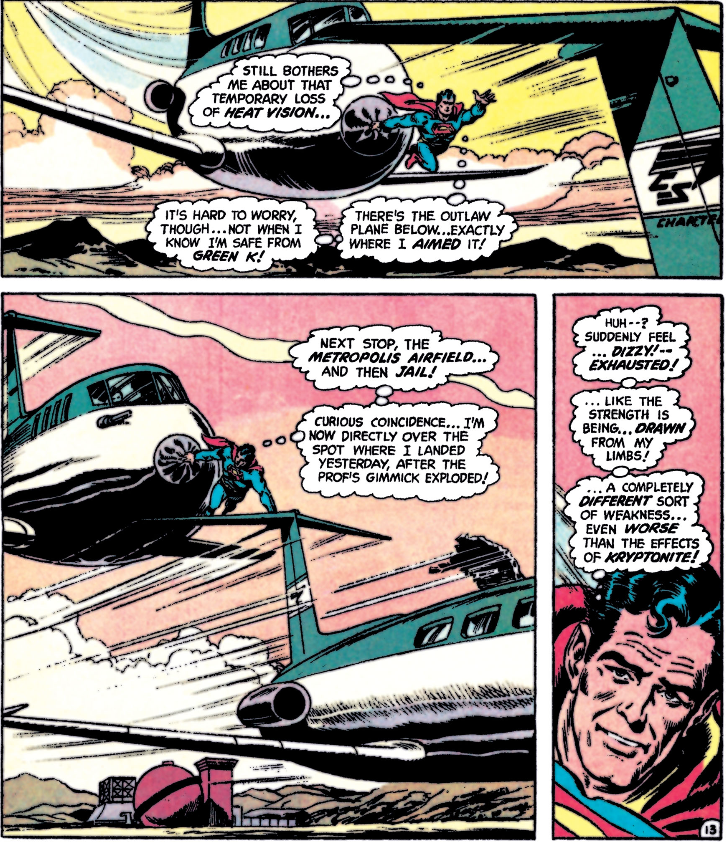
The third change, only hinted at here, is that Superman is having spasms of weakness for no discernible reason. What’s with that? Here’s the ending hint.
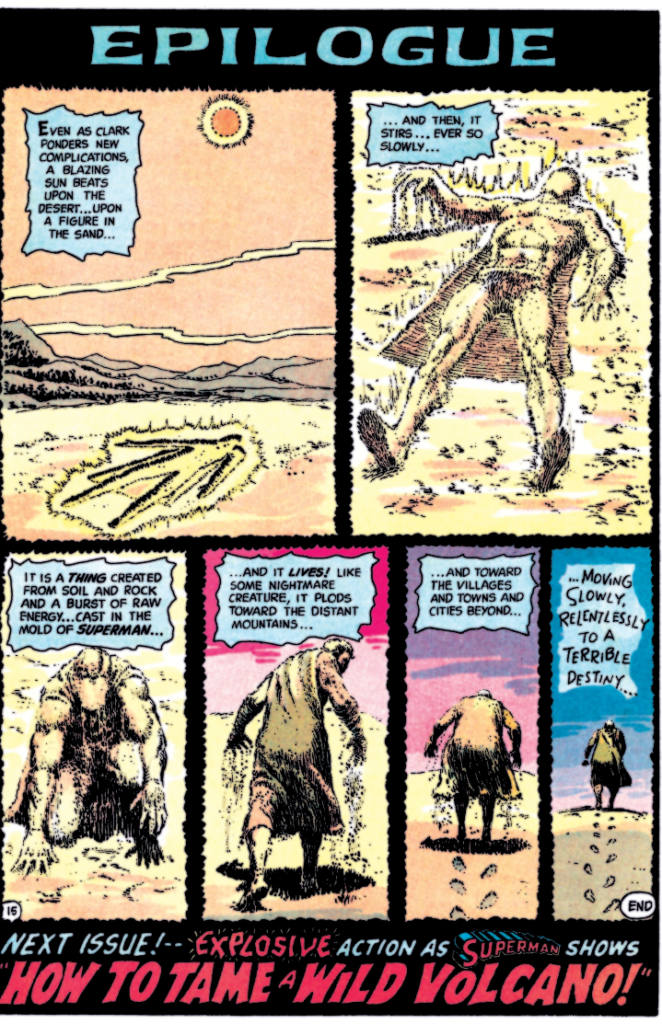
While I know what lies ahead, I haven’t read more than a couple of the next few issues. I’m looking forward to seeing how the conflict between Superman and Sand-Superman plays out. Suffice to say, it will end with Superman significantly weaker and less invincible.
Did the changes take? To some extent. Not as long as Barry Allen stayed dead but a respectable stretch of time. Synthetic kryptonite shows up in 1975’s Superman #288, then again when the new Metallo debuts in #310 (Superman’s horrified reaction when he realizes who he’s up against is a great moment). Kryptonite meteors start falling on Earth again. Then we get to the 1986 reboot and kryptonite once again becomes a rare thing, then eventually more common …
Likewise, Superman’s powers began inching up again as he performed more and more spectacular feats only to have John Byrne lower them again.
If I recall correctly, Clark stayed on TV until the Byrne reboot, though after a while he was doing double duty for WGBS and the Daily Planet. As far as I’m aware, nobody’s tried putting Clark on the tube since.


Morgan Edge is so cheap he won’t even hire a cameraman.